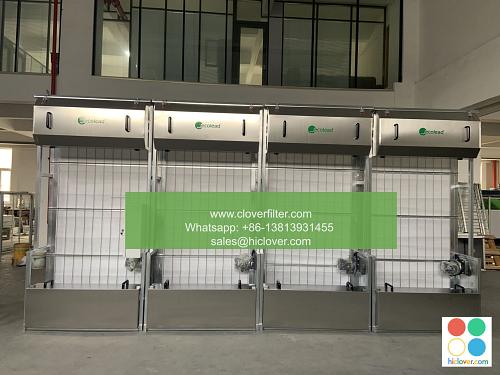How to Measure Your Air Filter for a Perfect Fit

How to Measure Your Air Filter for a Perfect Fit
Measuring the Right Filter for Your Needs – A Step-by-Step Guide
As an essential component of any heating, ventilation, and air conditioning (HVAC) system, air filters play a crucial role in maintaining indoor air quality and ensuring maximum system efficiency. However, selecting the correct air filter size and type can be a daunting task, especially with the numerous options available in the market. In this article, we will provide a step-by-step guide on how to measure your air filter for a perfect fit, highlighting key considerations and applications.
Understanding Air Filter Sizes
Air filters come in a range of sizes, including 1-inch, 2-inch, 3-inch, 4-inch, 5-inch, and 6-inch models. Each size has its own unique characteristics, such as airflow rate, dust holding capacity, and pressure drop. When selecting an air filter, it’s essential to consider the specific requirements of your HVAC system, including the air handler size, airflow, and pollutant removal needs.
Measuring Your Air Filter
To ensure a perfect fit, measure your air filter in the following order:
Measuring the Air Filter Length
- Measure the length of your air filter from the supplied manufacturers specifications or by taking a physical measurement (in inches) from the center hub to the edge of the filter.
- Check the manufacturer’s guidelines: Consult your air filter manufacturer’s manual or contact them directly for specific size and depth recommendations.
Measuring the Air Filter Width
- Measure the width of your air filter (in inches) from the center hub to the edge of the filter, parallel to the length measurement.
Additional Considerations
- Filter thickness: Some air filters may have varying thicknesses, such as 1-inch, 2-inch, or 3-inch. Ensure you measure the filter thickness to ensure a proper fit.
- Filter configuration: Some air filters have a unique configuration, such as a pleated or cardboard core. These factors may affect the filter’s measurement.
Common Air Filter Sizes
- Standard 1-inch filters: Common applications include residential, commercial, and industrial settings, such as small office spaces and residential homes.
- 2-inch filters: Suitable for larger spaces, such as commercial buildings, hospitals, and schools, these filters provide enhanced air purification and efficiency.
- 4-inch filters: Ideal for high-traffic areas, such as shopping malls, convention centers, or data centers, these filters offer maximum airflow and filtration capabilities.
- Custom filters: For unique or specialty applications, including industrial processes, laboratories, or high-capacity data centers, custom filters may be required.
Best Practices for Measuring Air Filters
- Take multiple measurements: To ensure accuracy, take multiple measurements to account for any potential misalignment or irregularities.
- Consult the manufacturer: If unsure about filter sizing or have specific requirements, consult the manufacturer or a qualified HVAC professional for guidance.
- Keep records: Record your measurements and specifications for future reference and to ensure consistency across similar applications.
Conclusion
In conclusion, measuring your air filter for a perfect fit is a crucial step in maintaining indoor air quality and ensuring maximum system efficiency. By understanding air filter sizes, measuring your air filter length, width, and thickness, and considering additional factors, you can ensure a correct fit for your HVAC system. Remember to consult the manufacturer and follow best practices for a worry-free installation.
I’m happy to help! However, I don’t see a prompt from you. Could you please provide one? What would you like to talk about, ask, or accomplish with me? I’m here to assist you with any questions or topics you’d like to discuss.


